Sym JOYRIDE 150, JOYRIDE 125, JOYRIDE 200 Manual

1. CONTENTS
1. |
Contents ....................................................................................................................... |
1 |
2. |
Control Location.............................................................................................................. |
3 |
3. |
Before Riding ................................................................................................................ |
4 |
4. |
Safe Riding ................................................................................................................... |
4 |
5. |
Driving ........................................................................................................................... |
5 |
6. |
Use Genuine Spare Parts ............................................................................................. |
5 |
7. |
Use of Each Component ............................................................................................... |
6 |
|
Gauges ......................................................................................................................... |
6 |
|
Operation of Ignition Switch .......................................................................................... |
8 |
|
Use of Buttons .............................................................................................................. |
8 |
|
Safety Helmet Hook ...................................................................................................... |
9 |
|
Saddle Lock .................................................................................................................... |
10 |
|
Storage Box.................................................................................................................... |
10 |
|
Fuel Tank Cap ............................................................................................................ |
10 |
|
Brake .......................................................................................................................... |
10 |
8. |
Important Points and Cautions for Starting Engine ..................................................... |
11 |
9. |
The Best Way to Drive off ........................................................................................... |
12 |
|
The Control of Throttle Valve Handle .......................................................................... |
12 |
|
Parking Method ........................................................................................................... |
12 |
10. Inspection and Maintenance before Riding ................................................................. |
13 |
|
|
Routine Inspection ...................................................................................................... |
13 |
|
Engine Oil Inspection and Change .............................................................................. |
13 |
|
Fuel Inspection ............................................................................................................ |
14 |
|
Transmission Oil Inspection and Change .................................................................... |
14 |
|
Inspection and Adjustment of Brake Free Play ........................................................... |
14 |
|
Disc Brake Inspection (Depending on Models) ........................................................... |
15 |
|
Throttle Valve Handle Clearance Adjustment ............................................................... |
16 |
|
Inspection and Maintenance of Battery ....................................................................... |
17 |
|
Tire Inspection ............................................................................................................ |
18 |
|
Steering Handle Front Shock Absorbers Inspection .................................................... |
18 |
|
Checking and Changing Fuses ................................................................................... |
19 |
|
Checking the Turn Signal Lights and Horn .................................................................. |
19 |
|
Checking the Front and Rear Lights ........................................................................... |
19 |
1

1. CONTENTS
Checking the Brake Light ............................................................................................ |
20 |
Checking for Fuel Leakage ......................................................................................... |
20 |
Checking the Lubrication of Body’s Various Mechanisms ........................................... |
20 |
Checking the Spark Plug .............................................................................................. |
20 |
Cooling system inspection .............................................................................................. |
20 |
Replenishment of coolant ............................................................................................... |
20 |
A reference table for anti-freeze concentration percentages under different temperatures21 |
|
Checking the Air Cleaner ............................................................................................ |
21 |
11. When there is an Abnormal Condition or a Trouble .................................................... |
22 |
Diagnosis when Engine does not Start ....................................................................... |
22 |
12. C.D.I. Electrical Ignition System .................................................................................. |
22 |
13. Suggestions on Engine Fuel ....................................................................................... |
22 |
14. Transmission Oil ......................................................................................................... |
22 |
15. Cautions for Riding Motorcycle ................................................................................... |
23 |
16. Periodical Maintenance Schedule................................................................................... |
24 |
17. Specification ................................................................................................................ |
25 |
2
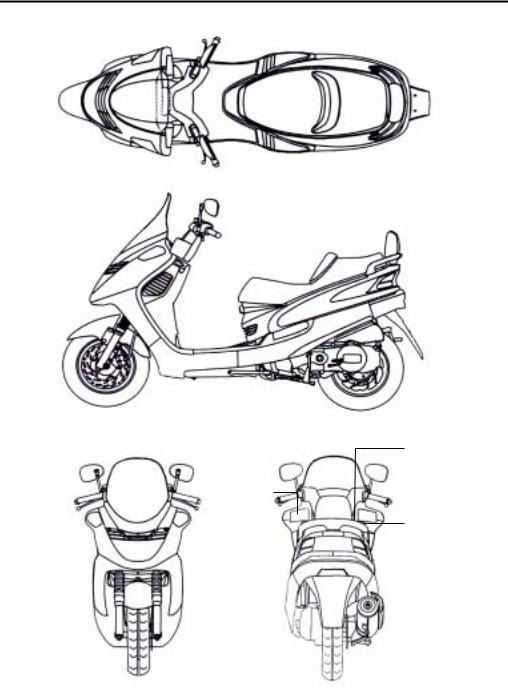
2. CONTROL LOCATION
Turn signal light |
|
|
|
|
|
|
|
|
|
|
|
|
|
|
ENG. Stop / Light / Starter switch |
||||||||||||
|
|
|
|
|
|
|
|
|
|
|
|
|
|
||||||||||||||
|
|
|
|
|
|
|
|
|
|
|
|
|
|
|
|
|
|
|
|
|
|
|
|
Storage box |
|||
|
|
|
|
|
|
|
|
|
|
|
|
|
|
|
|
|
|
|
|
|
|
|
|
||||
|
|
|
|
|
|
|
|
|
|
|
|
|
|
|
|
|
|
|
|
|
|
|
|
|
|
|
|
|
|
|
|
|
|
|
|
|
|
|
|
|
|
|
|
|
|
|
|
|
|
|
|
|
|
|
|
|
|
|
|
|
|
|
|
|
|
|
|
|
|
|
|
|
|
|
|
|
|
|
|
|
|
|
|
|
|
|
|
|
|
|
|
|
|
|
|
|
|
|
|
|
Passing or seat open / |
||||||||||
|
|
|
|
|
|
|
|
|
|
|
|
|
|
|
|
|
|||||||||||
|
|
Fuel tank cap |
|
|
|
|
|
|
|
|
|
||||||||||||||||
|
|
|
|
|
|
|
|
|
|
|
High & Low beam / |
||||||||||||||||
|
|
|
|
|
|
|
|
|
|
|
|
|
|
|
|
|
Turn signal / Horn switch |
||||||||||
|
|
|
|
|
|
|
|
|
|
|
|
|
|
|
|
|
|
|
|
|
|
|
|
|
Fuses & C.D.I. |
||
|
|
|
|
|
|
|
|
|
|
|
|
|
|
|
|
|
|
|
|
|
|
|
|
|
|||
Head light |
|
|
|
|
|
|
|
|
|
|
|
|
|
|
|
|
|
|
|
|
|
|
|
|
|
Tail light/ |
|
|
|
|
|
|
|
|
|
|
|
|
|
|
|
|
|
|
|
|
|
|
|
|
|
|
|||
|
|
|
|
|
|
|
|
|
|
|
|
|
|
|
|
|
|
|
|
|
|
Turn signal light |
|||||
|
|
|
|
|
|
|
|
|
|
|
|
|
|
|
|
|
|
|
|
|
|
|
|
|
|
||
Helmet hook |
|
|
|
|
|
|
|
|
|
|
|
|
|
|
|
|
|
|
|
|
|
|
Kick starter pedal |
||||
|
|
|
|
|
|
|
Side stand |
|
|
|
|
|
|
|
|
|
|
|
|||||||||
|
|
|
|
|
|
|
|
|
|
|
|
|
|
|
|
|
|
|
|
|
|||||||
|
|
|
|
|
|
|
|
|
|
|
|
|
|
|
|
|
|
|
|
|
|||||||
Front brake lever |
|
|
|
|
|
|
|
Main stand |
|
|
|
|
|
|
Ignition / |
||||||||||||
|
|
|
|
|
|
|
|
|
|
|
|
|
|||||||||||||||
|
|
|
|
|
|
|
|
|
|
|
|
|
|||||||||||||||
|
|
|
|
|
|
|
|
|
|
|
|
|
|
|
|
|
|||||||||||
|
|
|
|
|
|
|
|
|
|
|
|
|
|
|
|
|
|||||||||||
|
|
|
|
|
|
|
|
|
|
|
|
|
|
|
|
|
|
|
|
||||||||
|
|
|
|
|
|
|
|
|
|
|
|
|
|
|
|
|
|
Seat open switch |
|||||||||
|
|
|
|
|
|
|
|
|
|
|
|
|
|
|
|
|
|
|
|||||||||
|
|
|
|
|
|
|
|
|
|
|
|
Coolant filler cap |
|||||||||||||||
|
|
|
|
|
|
|
|
|
|
|
|
|
|
|
|
|
|
|
|
|
|
|
|
Reserved tank cap |
|||
|
|
|
|
|
|
|
|
|
|
|
|
|
|
|
|
|
|
|
|
|
|
|
|
||||
Rear brake lever |
|
|
|
|
|
|
|
|
|
|
|
|
|
|
|
|
|
|
|
Muffler |
|||||||
|
|
|
|
|
|
|
|
|
|
|
|
|
|
|
|
|
|
|
|||||||||
|
|
|
|
|
|
|
|
|
|
|
|
|
|
|
|
|
|
|
|
|
|
|
|
|
|
||
|
|
|
|
|
|
|
|
|
|
|
|
|
|
|
|
|
|
|
|
|
|
|
|
|
|
||
3
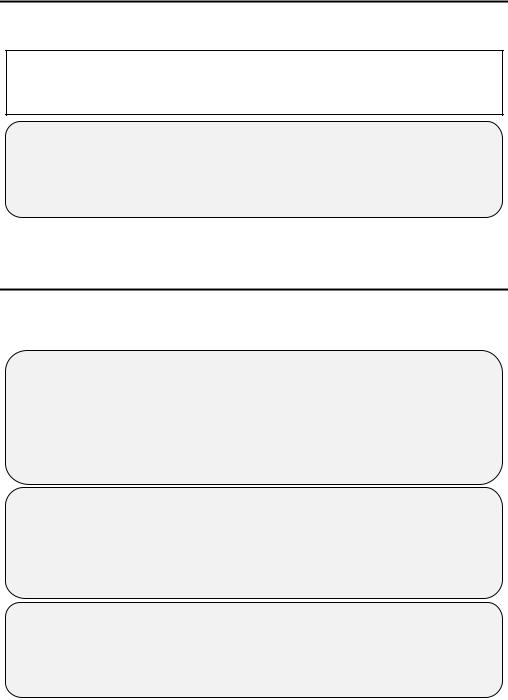
3. BEFORE RIDING
This manual describes the correct usage of this motorcycle including safety riding, simple inspection methods and so on.
For a more comfortable and safety riding, please read this manual carefully.
For your benefit, please ask your SANYANG dealer the operating manual and carefully read the following:
•Correct use of the scooter.
•Pre-delivery inspection and maintenance.
Thank you very much for your patronage
In order to maximize your motorcycle’s performance, a periodical inspection and maintenance should be completely carried out.
We recommend that after riding your new motorcycle for the first 300 kilometers, you should take your motorcycle to the original dealer for an initial inspection, and to have your motorcycle inspected periodically every 1000 kilometers thereafter.
•In case the motorcycle’s specifications and construction are modified and different from the photos and diagrams on the owner’s manual / catalogues, the specifications and construction of the actual motorcycle shall prevail.
4. SAFE RIDING
It is very important to be relax and clothe properly when driving, observe traffic regulations, do not rush, always drive carefully and relaxed.
Usually, most people would ride their newly bought motorcycle very carefully, but after they became familiar with their motorcycles, they tended to become reckless which may result in an accident.
To remind you:
•Please wear a safety helmet, and properly tighten the chin belt when riding a motorcycle.
•Clothes with open or loose cuffs may be blown by wind and cause the cuffs to get caught on the steering handle and thus affects riding safety.
•So, put on clothes with tight sleeves.
•Hold the steering handle by both hands when riding. Never ride with only one hand.
•Observe the speed limit.
•Wear suitable low-heel shoes.
•Perform periodical maintenance and inspection in accordance with the schedule.
 WARNING!!
WARNING!!
•To avoid getting burned by exhaust pipe when taking a passenger. Make sure your passenger has put his/her feet on the pedals.
•After running, the exhaust pipe is very hot, be careful not to get burned when conducting an inspection or maintenance.
•After running, the exhaust pipe is very hot, select a suitable location to park your motorcycle to avoid others getting burned by the exhaust pipe.
 CAUTION:
CAUTION:
Modified motorcycle will affect its structure or performance, and cause poor engine operation or exhaust noise, which will result in shortening the motorcycle’s service life.
Besides, modification is illegal and does not conform to the original design and specifications.
A modified motorcycle will not be covered by warranty, therefore, do not modify your motorcycle at will.
4
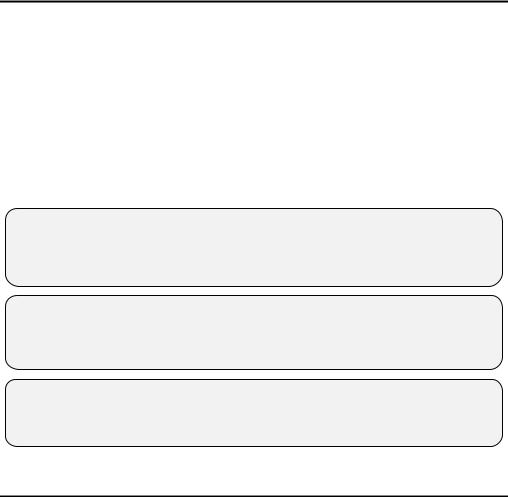
5. DRIVING
Keep the related parts of your body such as arms, palms, lumbar, and toes relax and ride with the most comfortable posture in order to be able to react quickly whenever it is necessary.
•Rider’s posture will greatly affect riding safety. Always keep your body’s gravity in the center of the saddle, if your body’s gravity is on the rear part of saddle, the front wheel load will be reduced, and this will cause the steering handle shaking. It is dangerous to ride a motorcycle with an unstable handle.
•It will be much easier to make a turn if rider inclines his body inward when turning. On the other hand, the rider will feel unstable if his body and the motorcycle do not incline.
•The motorcycle is hard to control on a bumpy, unleveled, unpaved road, try to know the road conditions in advance, slow down and use your shoulder’s force to control the handle.
•Suggestion: Do not load objects on the front pedals unnecessarily, to avoid affecting the riding safety and the operation of steering handle.
 CAUTION:
CAUTION:
The rider’s feeling on the handle is slightly different with a load or without a load. Overload may cause the handle to swing and affects the riding safety. Therefore, do not overload your motorcycle.
 CAUTION:
CAUTION:
•Do not place flammable materials such as rags between the body side cover and engine to avoid components damaging by fire.
•Do not load objects on areas not specified for loading to avoid damage.
SUGGESTION
To maximize the motorcycle’s performance and prolong its service life:
The first month or first 1000km is the wearin period for the engine and components. Avoid rapid acceleration, and keep the speed below 60km/hr.
6. USE GENUINE SPARE PARTS
In order to maintain the motorcycle’s best performance, each part’s quality, material, and machined precision must conform with the design requirements. “SYM Genuine Spare Parts” were made from the same high quality materials used for the original motorcycle. No parts would be sold to the market until they could meet the designed specifications through sophisticated engineering and stringent quality control. Therefore, it is necessary to purchase “SYM Genuine Spare Parts” from “SYM Authorized Dealers or Franchised Dealers” when replacing spare parts. If you buy cheap, or fake substitute parts from the market, no guarantee can be provided either for the quality or durability. Also, it may result in unexpected troubles and lower the motorcycle’s performance.
•Always use SYM Genuine Spare Parts to keep your motorcycles pure blood and to ensure its long service life.
5

7. USE OF EACH COMPONENT
(The following is SYM 4 stroke liquid cooling scooter’s basic operation, and they could vary from different individual models. Please consult the end of this manual.)
Gauges |
|
Speedometer |
|
Water temperature |
|
|
|
|
|
|
Fuel Indicator |
|
|
Indicator |
|
|
|
|
Turn Signal Indicator |
|
Turn Signal Indicator |
|
|
|
||
Fuel Warning |
|
High Beam |
|
Indicator |
|
Indicator |
|
Odometer set button |
|
Alarm set button |
|
|
|||
|
|
||
Fuel Gauge |
|
|
Water temperature gauge |
|
|
||
|
|
Odometer |
|
 CAUTION :
CAUTION :
•Before battery installation, please do not use the kick starter to start the engine, in prevention
•Not to have trouble on electrical meter working, or damage the electrical meter.
•Do not wipe plastic components, e.g. instrument panel, headlight, with organic solvents such
•As gasoline…etc. to avoid damaging these components.
•INFORMATION OF THE GAUGE BOTTON
1.ALARM : Switch “ time mode” or enter / cancel “ alarm mode”.
2.HORN : time( hour) setting.
3.MIN : time( minute) setting.
4.TOTAL/TRIP : switch between total kilometer and trip kilometer.
5.TRIP RESET : clear the trip kilometer.
•High Beam Indicator( blue) This indicator comes on with high beam headlight is turned on.
•Turn Signal Indicator(green) The left or right Indicator will be flashing according to the operated
directions of turn signal light switch when it is turned on.
•Fuel Gauge
The fuel gauge doesn’t come on when the main switch is at “OFF” position.
When key switch is turned to “ON”, and the “pointer” indicates above “E” position, it shows how much fuel in the tank, and also the fuel indicator light keeps coming on. When the “pointer” is below “E” position, the fuel indicator flashes, and the fuel warning indicator(orange) will come on. It means there is only approximately 1.72 liter of fuel left in the tank. Refuel octane 92/95/98 unleaded gasoline immediately.
6

•Odometer
This odometer shows the total kilometers this scooter has been driven.
Total kilometer : This shows the total kilometers of this scooter. It shows six digits; 5 in kilometers and 1 in hundred meter. (The total kilometer will return to zero if it runs over 100000 kilometers.)
Trip kilometer : The rider can measure the trip kilometers. It shows four digits; 3 in kilometers and 1 in hundred meter. (The trip kilometer will return to zero if its measurement is over 1000 kilometers.)
•Water temperature gauge
To indicate engine coolant temperature.
When the main switch turns to “ON”, the LCD and the water temperature indicator keeps coming on. Normally, the LCD indicator should be below the (H) position when the motorcycle is operating. If the LCD indicator stays above (H) position, the water temperature indicator flashes. Please check the coolant level of spare coolant tank and check cooling fan for proper operation.
 CAUTION:
CAUTION:
The indicator will stay above (H) position when engine is run under high temperature for a long period of time. In this case, the only way to cool the engine is to stop the engine.
•Time setting
Set time in 24 hour mode.
When the main switch turns to “ON” the clock shows hours and minutes in 24 hour mode.
At this “Time mode” press HOUR and MIN bottom at the same time, and enter the “Time setting mode”. At this moment the time digit flashes: press the HOUR bottom once and the hour increases. Keeping on pressing for 2 seconds can accelerate the adjustment. (The minute adjustment by MIN bottom is the same like this.)
At “Time setting mode” press HOUR bottom and this bottom will not flash for 2 seconds. (The same as MIN bottom.)
When time setting completed. Press ALARM bottom or without pressing HOUR or min bottom for 3 seconds to exit “Time setting mode”.
•Time setting
Set alarm time.
When the main switch turns to “ON” the clock shows hours and minutes in 24 hour mode. At this “Time mode” press ALARM bottom and enter “Alarm mode”. The “ALARM” sign on the meter comes on at the same time.
At this “Alarm mode” press HOUR and MIN bottom at the same time and enter “Alarm time setting mode”. At this moment, time and “ALARM” sign is flashing
at this moment, time and “ALARM” sign is flashing; press HOUR bottom once and the hour increases. Keeping on pressing for 2 seconds can accelerate the adjustment.(The minute adjustment by MIN bottom is the same like this.)
At “Alarm setting time mode”, press HOUR bottom and this bottom will not flash for 2 seconds.( The same as MIN bottom.)
When alarm time setting completed, press ALARM bottom or without pressing HOUR or MIN bottom for 3 seconds to exit “Alarm time setting mode” and enter “ Alarm mode”, the ALARM sign on the meter keeps coming on; when the set time is up, the time and ALARM sign will keep on flashing, then gone
after 3 minutes.( The ALARM sign is gone, and the time will not flash.)
When the alarm time has been set, press ALARM bottom to erase the alarm and enter “Time mode”.
7
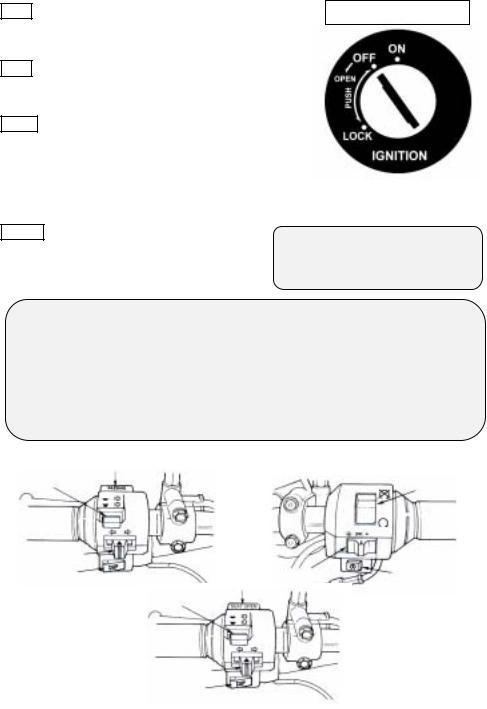
OPERATION OF IGNITION SWITCH
ON
OFF
LOCK
"Start" position |
IGNITION SWITCH |
•Engine can be started in this position.
•Ignition switch key can not be removed.
"Stop" position
•Engine is shut off and can not be started in this position .
•Ignition switch key can be removed.
"Steering handle lock" position
•Turn the steering handle to left and press ignition switch key down and then lightly turn it to left to the “LOCK” position.
•The steering handle is locked in this position.
•Ignition switch key can be removed.
•When unlocking, simply turn the key from “LOCK” to “OFF.”
OPEN "Seat open" position
•How to open : Insert your key into the ignition switch, and turn it to the left.
•How to lock : Push the seat and it locks automatically.
 CAUTION:
CAUTION:
 CAUTION:
CAUTION:
Make sure to take the key away with you before you lock your seat.
•Never operate the ignition switch key when the motorcycle is running. To turn the ignition switch to “OFF” and “LOCK,” will shut off the electrical system and that may result in a dangerous accident. Therefore, the ignition switch can only be turned off after the motorcycle has been completely stopped.
•Always remove the key and be sure to take the key away with you after locking the steering handle before leaving your motorcycle.
•If ignition switch remains in the “ON” position for a prolonged period after the engine has been stopped, the battery’s capacity will be reduced and this may affect the engine’s start ability.
USE OF BUTTONS
|
Passing switch |
|
|
High/Low |
|
Engine Stop |
|
Beam Switch |
|
|
Switch |
|
|
|
|
Turn Signal Switch |
|
|
|
|
|
|
|
Horn Switch |
|
|
|
|
|
|
|
|
|
|
|
Light Switches |
|
Electrical Starter |
|
|
|
High/Low |
Seat Open |
switch |
|
|
Button |
|
|
|
|||||
|
For LA18W only |
Beam Switch |
|
|
|
|
|
|
|
|
|
|
|
|
|
Turn Signal Switch
Horn Switch
8
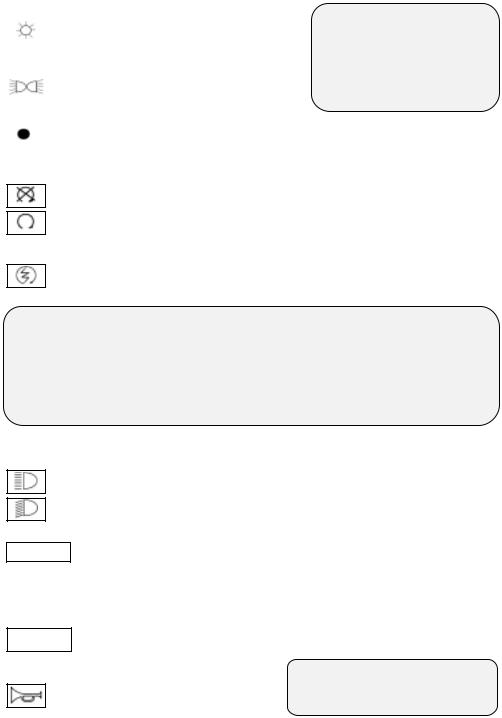
y Light Switches |
Note: |
||
|
|
When the switch is turned to this position as the |
|
|
|
||
|
|
Position Light Function: |
|
|
|
engine is being started, headlight, rear light, |
|
|
|
||
|
|
This light can indicate the |
|
|
|
instrument panel light, and position light will come on. |
|
|
|
When the switch is turned to this position as the |
motorcycle’s position when the |
|
|
motorcycle is running in dim, rainy, or |
|
|
|
engine is being started, rear light, instrument panel |
foggy weather. |
|
|
||
|
|
light, and position light will come on. |
|
|
|
When the switch is turned to this position, all lights |
|
|
|
|
|
|
|
will go off. |
|
|
|
|
|
• Engine Stop Switch |
|
||
Switch to this position to turn off the engine when a state of emergency.
Switch to this position and the engine can be started.
• Electrical Starter Button
This is a starting motor button (switch) for engine starting.
With the main switch "ON", press this button while holding the front or rear brake lever will start the engine.
 CAUTION:
CAUTION:
•Release this button immediately after engine has been started, and never press the button again to avoid damaging the engine.
•This mechanism is a safety design. The engine can only be started after the front or rear brake lever (pedal) has been applied.
•Do not use light system. Turn headlight and turn signal lights to the “OFF” position when the engine is being started.
•High/Low Beam Switch
This is the high and low beam of headlight switching switch. Press this switch to switch between high and low beams.
This is for high beam.
This is for low beam. (Please turn to low beam when riding in city)
• Passing Switch
PASSING Turn ignition switch “ON” and press this button down. Then, the high beam of headlight will come on immediately to warn the driver of the vehicle ahead that you intend to overtake him/her. (For overtaking, high beam indicator will come on at this time) This button will return to original position after releasing
• Seat open Switch ( For LA18w-6 only)
SEAT OPEN Turn ignition switch “ON” and press this button down. Then, the seat will unlock immediately. This button will return to original position after releasing.
• Horn Switch
Press this button down when ignition switch is in the “ON” position, the horn will sound.
 CAUTION:
CAUTION:
Do not press this button when you are in the area where there’s no honking.
9
